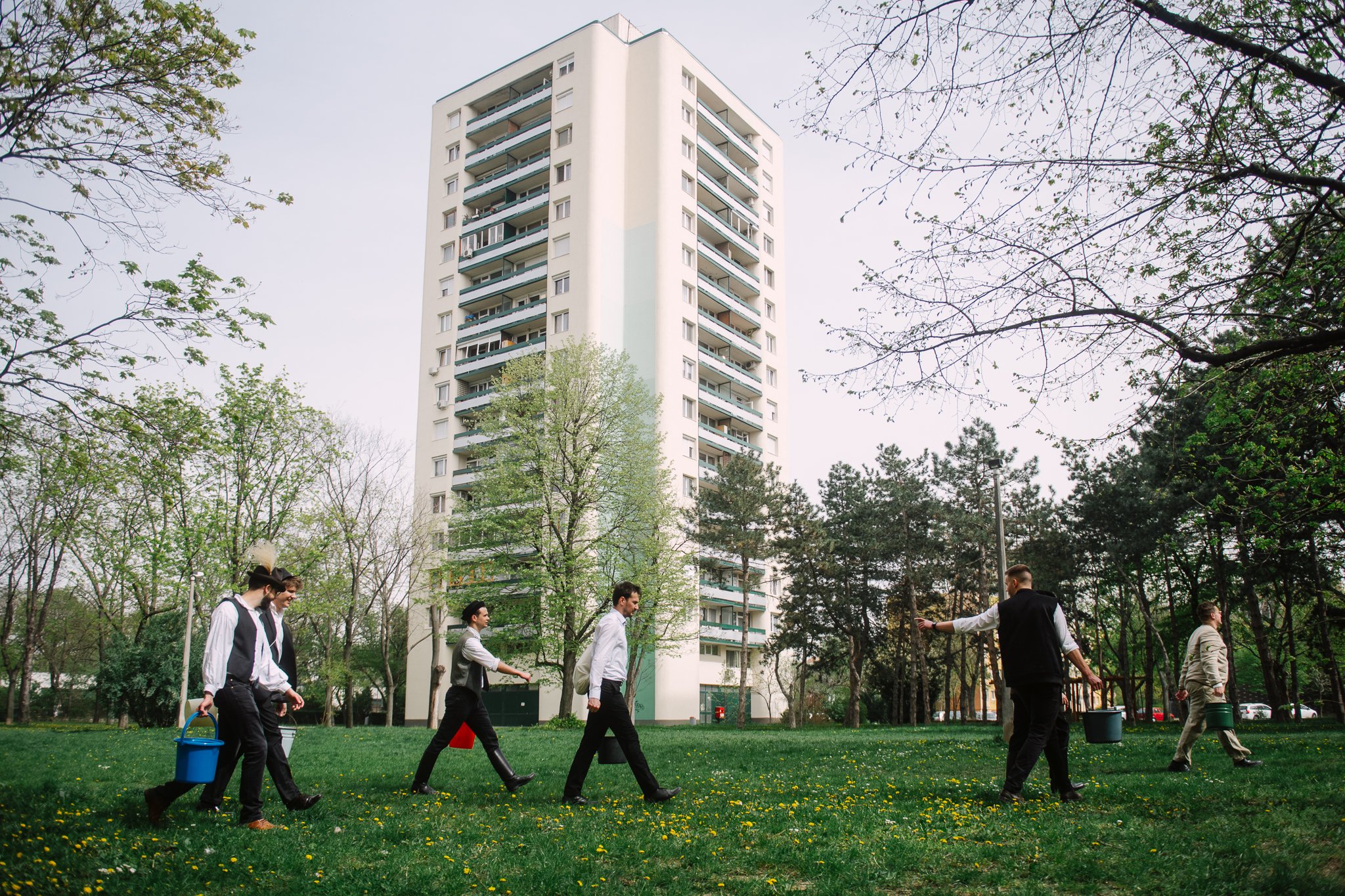The Easter sprinkling (“locsolkodás”) of the BME Folk Dance Ensemble
Budapest, 2024
Around 40 male members of the BME Folk Dance Ensemble (MENTE) met at the Boráros square just before 7pm on Easter Monday, 1 April 2024. The ensemble hosted by the Budapest University of Technology and Economics has about 150 active members, 500 in total. The sprinkling (in Hungarian “locsolkodás”), which started six years ago, has become a tradition for them. Peter (nicknamed Adorján) led the action, they sprinkled about fifty girls at five locations. In addition to sprinkling, dancing is also a mandatory element. The unusual morning sounds aroused the curiosity of many local residents. They had never seen anything like it. No one was bothered by the loud folk music, to which the only female member of the group, Viki, the main fiddler, played the music and her partner accompanied her on viola. Usually, poems precede the act of sprinkling; this time, they were written by the boys themselves. This year, a poem written in a Balassi stanza prevailed. However, no literary analysis followed, as the boys quickly got to the point, storming the girls with their buckets. After that, the cups got out of the cupboards, and there were several tpyes of pálinka and bitter to choose from. The girls could also be proud of themselves: they had baked cakes and made sandwiches enough for an army at each location. After eating, they returned to the dance floor, be it the space between communist-built apartment blocks next to Bikás Park, the interior courtyard of a typical appartment building in the vicinity of centre’s main the boulevard or a sleepy inner garden. Those who were not dancing were singing. The strange company was also noticed by many on the way; it is rare to see young people dressed in traditional folk costumes marching to music in Budapest. However, anytime throughout the day, whether I looked at elderly people passing by on street, at children peeking at us from windows or even at the slightly startled passengers of metro 4 watching the dance of the boys, I could see that we all understood the miracle. Without any words.
The selection of the series was exhibited at the Pixel and Folklore exhibition at the Hungarian Heritage House (Hagyományok Háza) in 2024.
The boys at the Kálvin station of metro line 4.
The viola player plays some music in the train while the others are singing, sometimes even dancing.
The boys are dancing in the courtyard of a classical tenement building on the boulevard. The girls are prepared for the sprinkling, the buckets are full.
Sprinkling. Although nowadays many use eau de cologne for sprinkling, out of gentleness, the classical material is water, a lot of water.
A group of girls after the sprinkling. The tradition is not just about puring a gigantic amount of water on girls. The poems recited before the sprinkling interpret the symbolism of the ritual. With the help of the water, the beautiful flowers will not wilt and their beauty will be renewed.
For one of the boys some pálinka is being to poured.
After the sprinkling, they returned to the dance floor. Now they're dancing "mezőségi csárdás", a Hungarian folk dance from Transylvania. Even the residents ran out at the strange sounds, they had never seen anything like it in their house.
The boys just filled their buckets and now getting ready to sprinkle. Another group of girls are waiting for them, this time near the metro station Bikás Park, among the communist-era blocks.
Sprinkling near the metro station Bikás Park.
The boys are receiving their reward: the girls prepared some beautifully painted eggs for them.









